It's already disappearing. The temporary city that forms during the annual Burning Man event is fading away, as the tens of thousands of people who traveled out to live in the desert of northwestern Nevada for the past week have filed out of the void and returned back to the rest of the world. The event's organizers and volunteers are still erasing the traces of the event, from demolishing structures to removing fencing to picking up trash. Within another week or so, the entire city will have disappeared. It's an interesting way for a city to exist -- just a few weeks at a time, once a year. But it's been working for Burning Man and Black Rock City, the name of that temporary city that forms and disbands almost as soon as it comes to full life. On top of what's already a unique experiment in citymaking, the theme of this year's event was Metropolis, which spurred the tens of thousands of people and artists who make up the city to think a little more about how their "party in the desert" is actually a little city and community (the fourth largest city in Nevada during its run), and how it relates to their world beyond the desert.
It's already disappearing. The temporary city that forms during the annual Burning Man event is fading away, as the tens of thousands of people who traveled out to live in the desert of northwestern Nevada for the past week have filed out of the void and returned back to the rest of the world. The event's organizers and volunteers are still erasing the traces of the event, from demolishing structures to removing fencing to picking up trash. Within another week or so, the entire city will have disappeared.
It's an interesting way for a city to exist -- just a few weeks at a time, once a year. But it's been working for Burning Man and Black Rock City, the name of that temporary city that forms and disbands almost as soon as it comes to full life. On top of what's already a unique experiment in citymaking, the theme of this year's event was Metropolis, which spurred the tens of thousands of people and artists who make up the city to think a little more about how their "party in the desert" is actually a little city and community (the fourth largest city in Nevada during its run), and how it relates to their world beyond the desert.
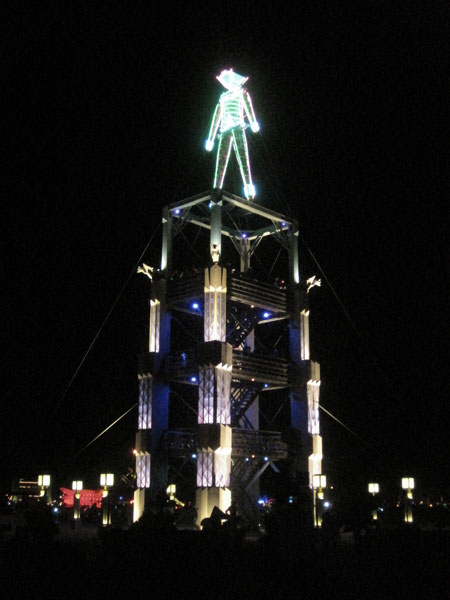
51,515 people had driven themselves into the far-off Black Rock Desert for the event by midnight last Friday, a new attendance record for the event, which has taken place every year in one form or another since 1986. The population has steadily increased over the years, a reality that has gradually turned the artist/anarchist/bohemian event into a temporary but perennial small-scale city. The Metropolis theme offered an interesting chance for attendees to think a little more about Burning Man's cityness, and the event's relation to real life in the "default world". Yeah, it's a party in the desert, but it's also an event that takes very seriously the community and civic experience it creates.
This year's theme was definitely an appropriate one for the event, and it inspired many city- and architecture-based art works and installations.
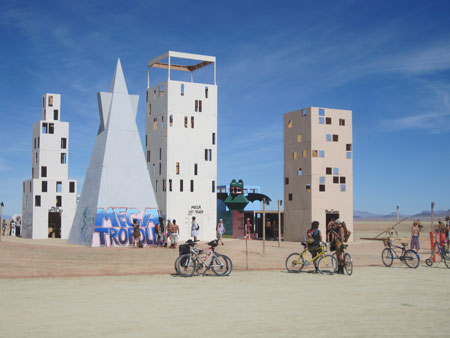
A collection of plywood skyscrapers dubbed "Megatropolis".
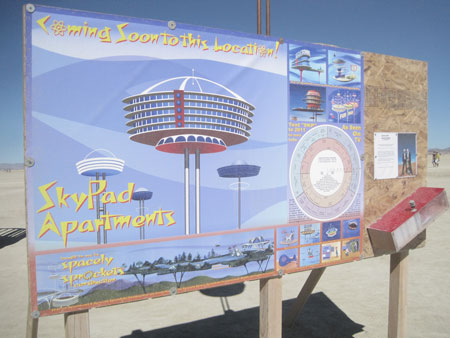
A faux development ad for Jetsons-inspired space-age future apartments.
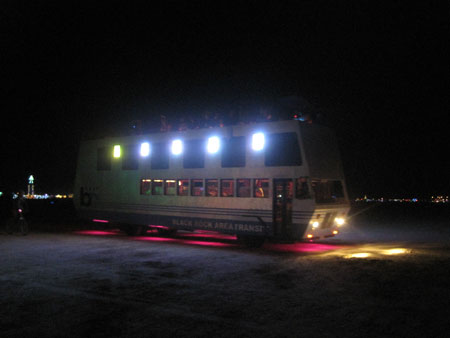
BART? No, that's BRAT -- Black Rock Area Transit.
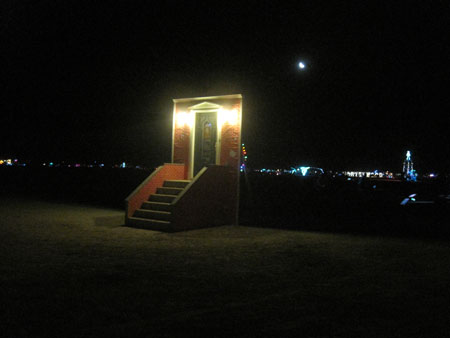
A cool front stoop display.
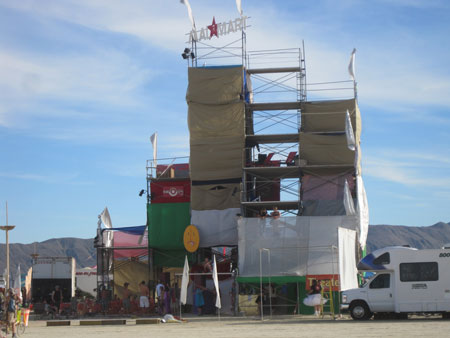
Mal-Mart, one of the more ambitiously tall structures at Burning Man this year.
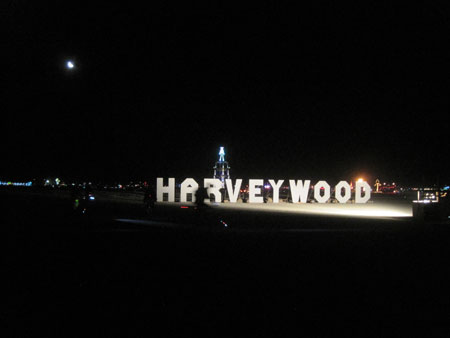
Harveywood, an homage/insult to Burning Man founder and director Larry Harvey.
The art is a major part of the event, and its breadth and detail is almost overwhelming. It's visual saturation that makes grasping the entirety of the event almost impossible. That some of the art at this year's event was related to cities was interesting, but that recognition of the event as a city is not something unique to 2010. How Burning Man functions as a city, and how that function evolved, is what makes Burning Man so interesting to me. It's a topic I'll be exploring in much further detail in a future article, and something touched upon in various places, including this piece from the January 2009 issue of Architect Magazine, more recently by Greg Scruggs writing on this year's event for Next American City, the Burning Man organization's own Metropol blog series, and in this blog post from The Architect's Newspaper looking at some of the architecture-related artworks on display this year.

Black Rock City from the top of the Burning Man.
It was an especially interesting year to be at Burning Man because of the theme. Conversations with half-naked people about infill in the camping areas and pedestrian-scaled design were an unexpected departure from the typical desert camp conversation. Whether it's this year's theme that got those conversations going is hard to say. The event itself is becoming a metropolis, and it seems that people are increasingly drawing that conclusion and a connection to the cities they regularly experience. The good thing about this year's Metropolis theme is that the urbanist discourse on Burning Man -- and its impact on actual cities and communities beyond the event -- is likely to continue.

Maui's Vacation Rental Debate Turns Ugly
Verbal attacks, misinformation campaigns and fistfights plague a high-stakes debate to convert thousands of vacation rentals into long-term housing.

Planetizen Federal Action Tracker
A weekly monitor of how Trump’s orders and actions are impacting planners and planning in America.

In Urban Planning, AI Prompting Could be the New Design Thinking
Creativity has long been key to great urban design. What if we see AI as our new creative partner?

King County Supportive Housing Program Offers Hope for Unhoused Residents
The county is taking a ‘Housing First’ approach that prioritizes getting people into housing, then offering wraparound supportive services.

Researchers Use AI to Get Clearer Picture of US Housing
Analysts are using artificial intelligence to supercharge their research by allowing them to comb through data faster. Though these AI tools can be error prone, they save time and housing researchers are optimistic about the future.

Making Shared Micromobility More Inclusive
Cities and shared mobility system operators can do more to include people with disabilities in planning and operations, per a new report.
Urban Design for Planners 1: Software Tools
This six-course series explores essential urban design concepts using open source software and equips planners with the tools they need to participate fully in the urban design process.
Planning for Universal Design
Learn the tools for implementing Universal Design in planning regulations.
planning NEXT
Appalachian Highlands Housing Partners
Mpact (founded as Rail~Volution)
City of Camden Redevelopment Agency
City of Astoria
City of Portland
City of Laramie




























